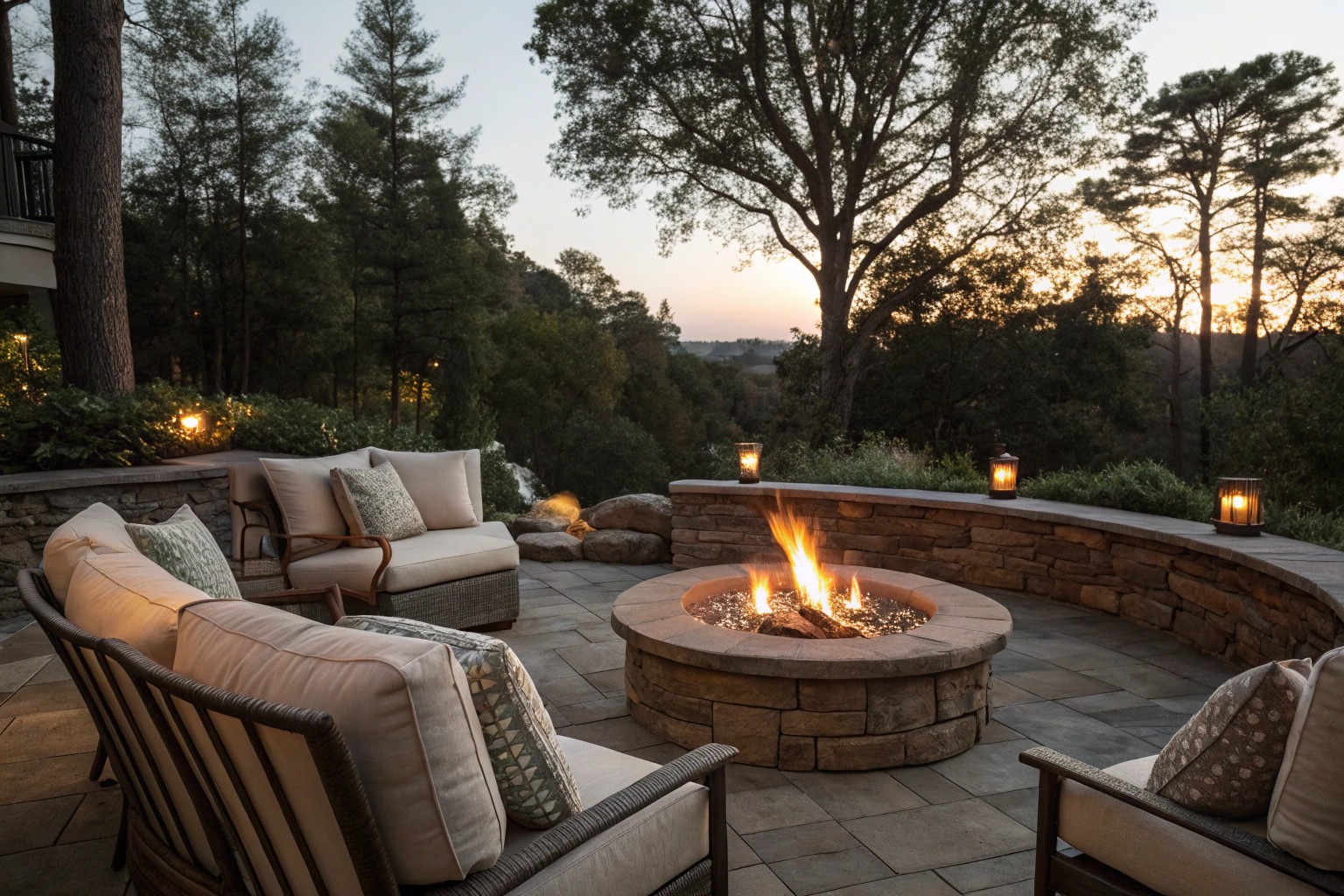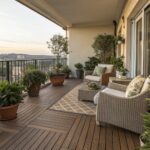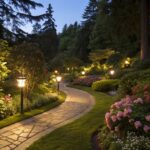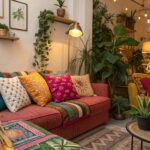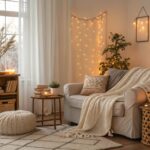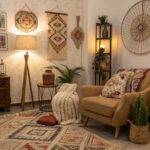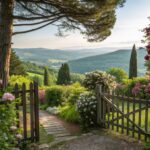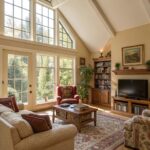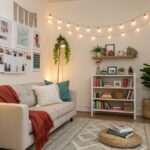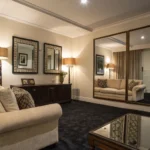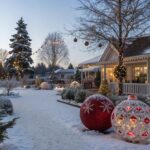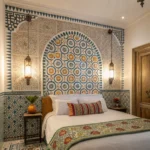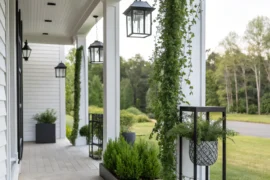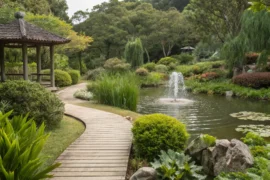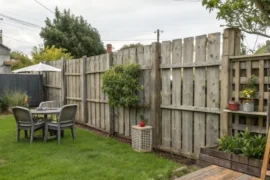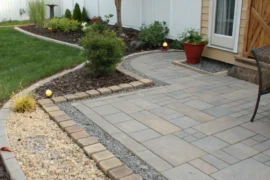Creating outdoor living spaces that can be enjoyed beyond the summer months requires thoughtful planning, strategic design choices, and an understanding of how climate affects comfort. As designers, we aim to extend the usability of outdoor areas through all four seasons, maximizing your investment and enriching your lifestyle. Throughout my career designing outdoor rooms across America’s diverse climate zones, I’ve found that the most successful spaces embrace rather than fight against seasonal changes.
Understanding Seasonal Design Principles
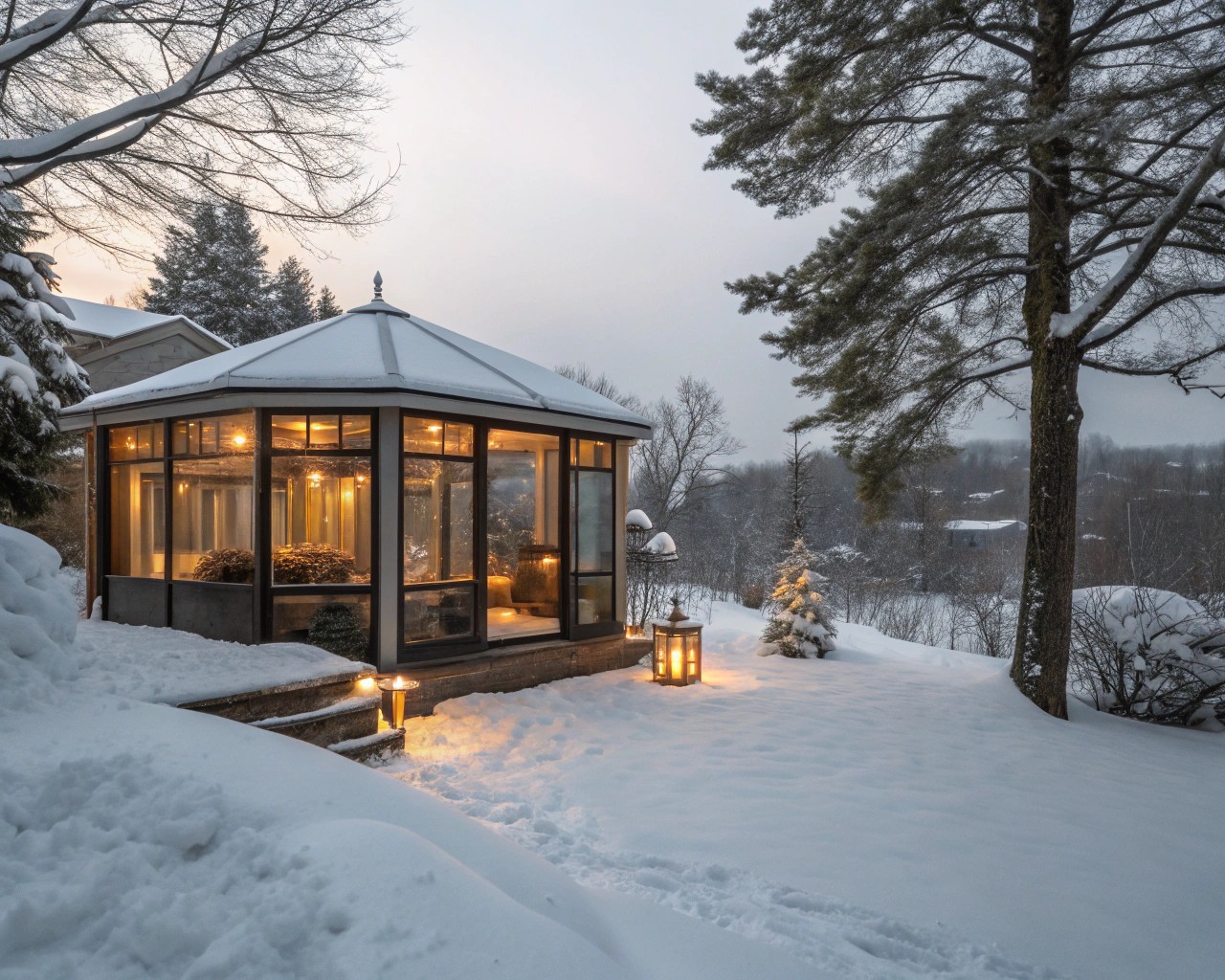
The foundation of any successful year-round outdoor space begins with understanding how each season affects your specific location. Climate considerations should inform every design decision, from structure selection to material choices.
Seasonal Challenges and Solutions
Each season presents unique opportunities and challenges that must be addressed:
Summer: Focus on creating shaded areas to escape the sun’s heat through pergolas, retractable awnings, and strategically placed trees. Proper ventilation and cooling systems are essential for comfort during hot months.
Fall: As temperatures drop, incorporating warmth through fire pits, outdoor heaters, and cozy seating areas becomes increasingly important. This transitional season offers beautiful natural ambiance but requires planning for more variable conditions.
Winter: Making outdoor spaces usable during cold months demands features like enclosed patios, outdoor fireplaces, and snow-resistant materials. Protection from precipitation and wind becomes paramount while maintaining visual connection to the landscape.
Spring: Spring’s unpredictability calls for flexible features like retractable screens, movable furniture, and proper drainage solutions to adapt to changing weather patterns.
Climate Considerations Table
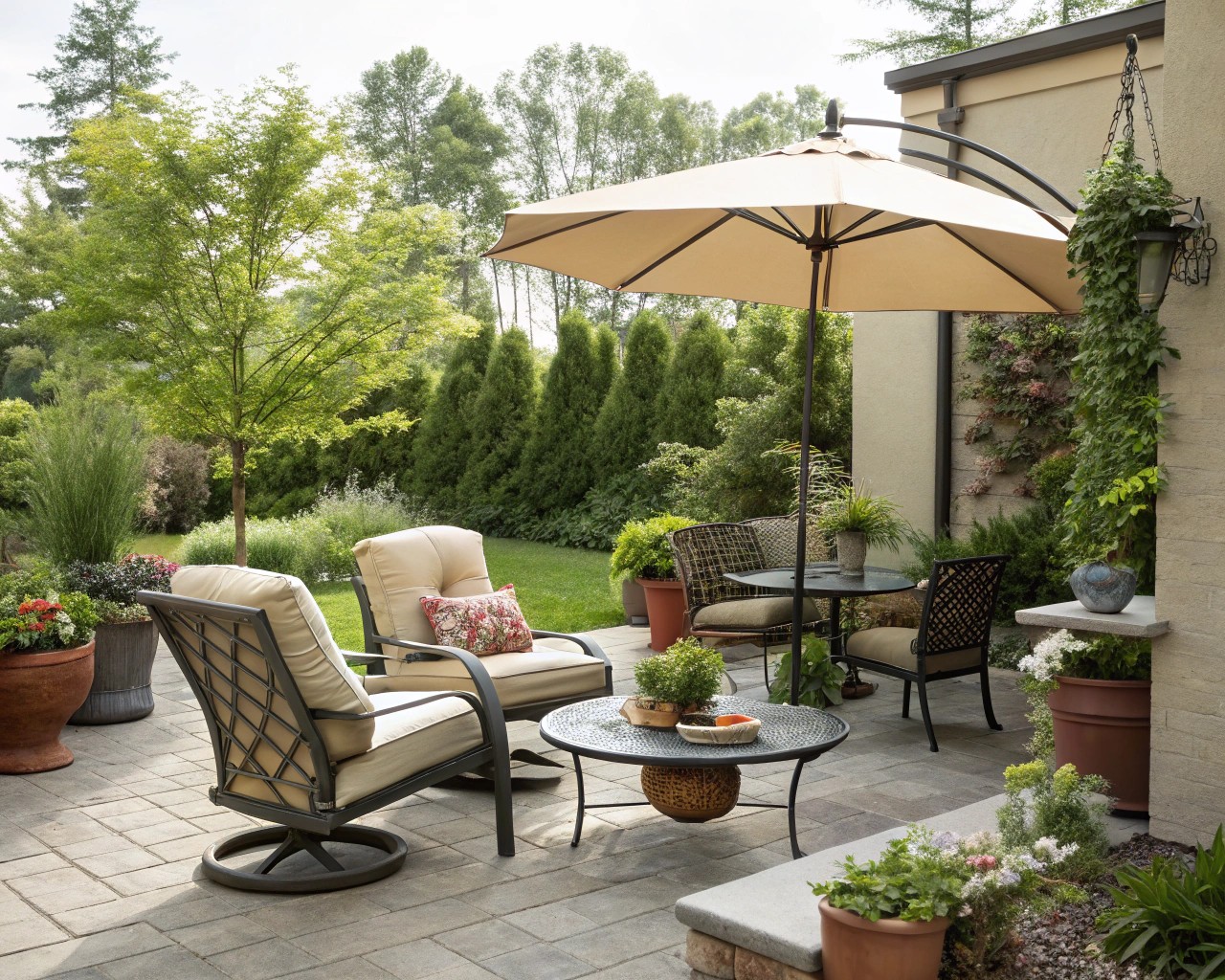
| Climate Type | Primary Challenges | Key Design Features | Recommended Structures |
|---|---|---|---|
| Hot/Arid | Extreme heat, sun exposure, drought | Shade structures, cooling systems, drought-tolerant landscaping | Pergolas, shade sails, misting systems |
| Cold/Snowy | Freezing temperatures, snow accumulation, short days | Enclosed spaces, heating elements, snow management | Sunrooms, enclosed porches, fire features |
| Humid/Rainy | Moisture control, mold prevention, insect management | Proper drainage, screened areas, mildew-resistant materials | Screened porches, pavilions with gutters |
| Temperate | Seasonal variations, transitional needs | Flexible, convertible spaces with adaptable features | 3-season rooms, convertible structures |
| Coastal | Salt exposure, wind, humidity | Corrosion-resistant materials, wind barriers, moisture management | Sturdy pavilions, strategic windbreaks |
Structural Elements for Year-Round Use
The framework of your outdoor room determines its functionality across seasons. Different structures offer varying levels of protection and comfort.
Types of Outdoor Structures
- Pergolas – Provide filtered shade and can be equipped with retractable covers for additional protection
- Pavilions – Larger structures with solid roofs offering shelter for bigger gatherings regardless of weather
- Screened Porches – Allow enjoyment of nature without insects while providing partial protection from elements
- Sunrooms/Four-Season Rooms – Fully enclosed spaces that function as true year-round living areas with climate control
- Three-Season Rooms – Versatile spaces with features like vertical sliding windows offering up to 75% airflow when open
- Shade Sails – Modern, artistic options that provide summer sun protection
- Garden Rooms – Standalone structures creating destination points within the landscape
I’ve found that many clients benefit from combining multiple structure types to create a progression of spaces with varying levels of enclosure. This approach provides maximum flexibility as weather conditions change throughout the year.
Case Study: The Czajkowski Family’s Three Outdoor Rooms
One particularly instructive project involved the Czajkowski family in Ashburn, VA. After a disappointing experience with another contractor who built an undersized, poorly constructed screened porch, we created three distinct but connected outdoor living spaces:
- “The Lodge” – A three-season room with high-quality screens and collapsible vinyl windows that could be closed during high pollen seasons when Jill’s allergies flared up
- A spacious deck – For warm-weather entertaining
- An open patio area – For grilling and casual gatherings
This multi-space approach provided options for every weather condition and personal comfort level, ensuring the outdoor areas remained useful throughout changing seasons.
Material Selection and Durability
The materials you choose determine how well your outdoor room withstands the elements year after year. Durability, maintenance requirements, and aesthetic appeal should all factor into your decisions.
Weather-Resistant Material Options
| Material Type | Best Uses | Weather Resistance | Maintenance Level | Approximate Lifespan |
|---|---|---|---|---|
| Treated Wood | Pergolas, decking, furniture | Moderate (requires regular sealing) | High | 10-15 years |
| Aluminum | Frameworks, furniture | Excellent (rust-resistant) | Low | 20+ years |
| Composite Decking | Flooring, built-in features | Excellent (resistant to rot, fading) | Low | 25+ years |
| Natural Stone | Patios, walls, fire pits | Excellent | Low | Lifetime |
| Polycarbonate | Roofing, screens | Good to excellent | Moderate | 10-20 years |
| Marine-Grade Fabrics | Cushions, curtains, shade sails | Very good (with proper care) | Moderate | A few seasons to 10 years |
When advising clients on material selection, we emphasize the importance of investing in quality upfront. For example, the 3-Season Rooms mentioned in our research rely on industrial-strength structural aluminum, specifically engineered to cope with severe climates, strong winds, and substantial winter snow loads.
One client in the Northeast initially hesitated at the cost of composite decking but later thanked us repeatedly after watching their neighbor’s wood deck deteriorate while theirs remained pristine year after year with minimal maintenance.
Climate Control for Extended Seasons
Temperature management is perhaps the most crucial element for truly year-round outdoor living. Without proper heating and cooling strategies, even the most beautiful outdoor room will sit unused during temperature extremes.
Heating Solutions
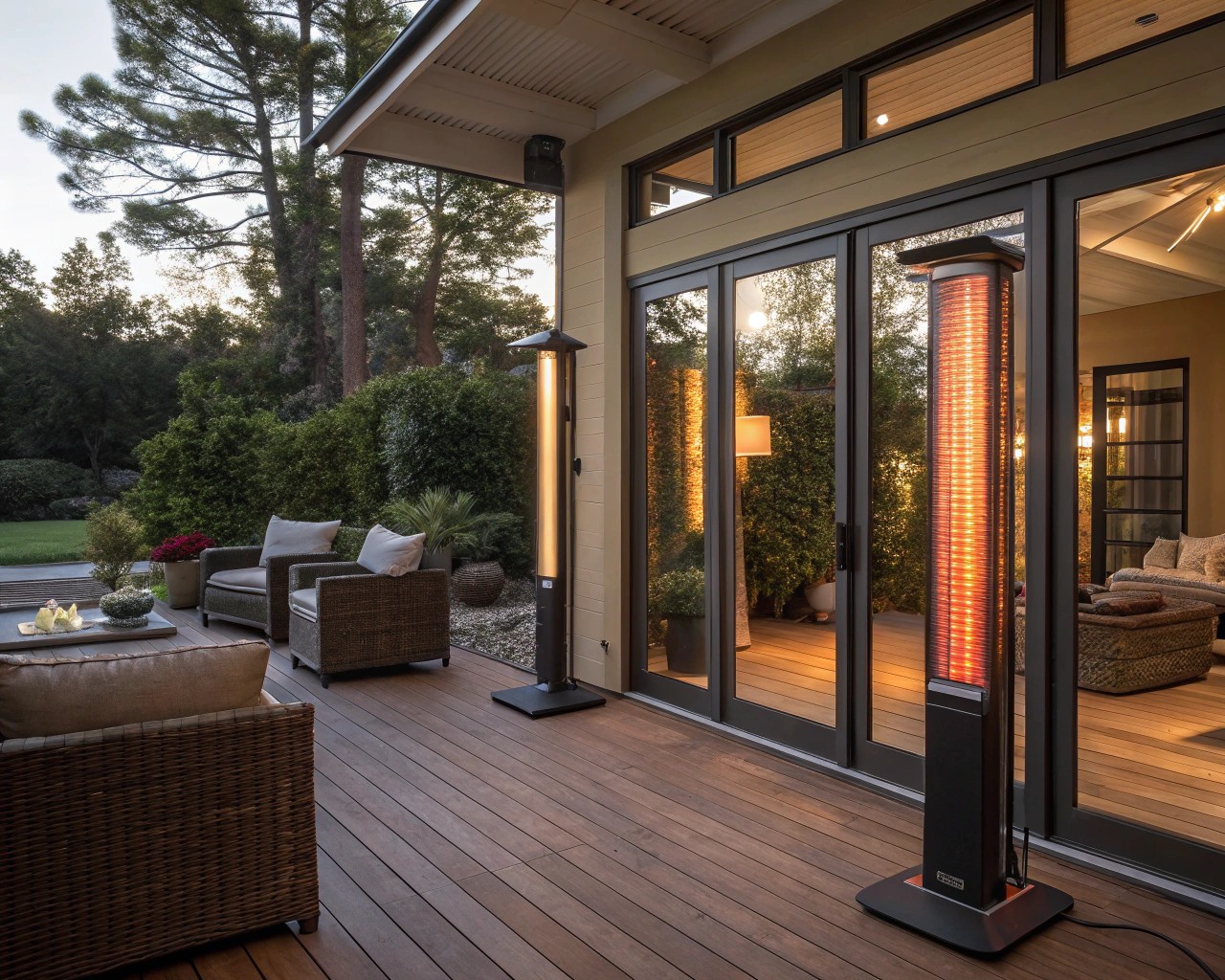
- Fire pits and fireplaces – Create natural gathering points and add ambiance along with warmth
- Patio heaters – Propane or electric options for focused heat
- Infrared heating panels – Energy-efficient option that warms objects rather than air
- Radiant floor heating – Ideal for covered areas with solid flooring
- Built-in heating systems – Integrated into structures for seamless appearance
Cooling Solutions
- Ceiling fans – Improve air circulation in covered areas
- Misting systems – Can reduce ambient temperature significantly on hot days
- Retractable shade systems – Block sun when needed
- Water features – Provide evaporative cooling effect
- Strategic landscaping – Trees and tall plants for natural shade
Comprehensive climate control is exemplified by systems like the LifeRoom mentioned in our research. Such systems often incorporate remote-controlled screens for managing sun and insects, atmospheric LED lighting, and push-button cooling or misting features capable of significantly lowering room temperatures by up to 40 degrees on extremely hot days.
Indoor-Outdoor Integration
The most successful year-round outdoor rooms maintain a strong connection to the home’s interior spaces, creating a seamless flow between indoors and out.
Design Strategies for Seamless Transitions
- Align floor levels – Minimize or eliminate steps between indoor and outdoor spaces
- Coordinate materials – Use complementary finishes for visual continuity
- Frame views – Position outdoor elements to be appreciated from indoors
- Create cover at transitions – Ensure protection from elements when moving between spaces
- Consider door and window placement – Large openings enhance connection
- Maintain consistent style – Reflect interior design themes in outdoor spaces
The Slim House project demonstrates how outdoor spaces can be thoughtfully connected to interior spaces both functionally and aesthetically. By considering this relationship during design, the outdoor areas become natural extensions of the home rather than disconnected afterthoughts.
Sarah Mitchenall, a specialist in combined interior and landscape design, suggests that viewing gardens and interiors as interconnected allows us to incorporate outdoor elements indoors and expand living areas outward, yielding “glorious results”. This integrated approach elevates both spaces.
Lighting for All Seasons
Thoughtful lighting extends the usability of your outdoor space, particularly during fall and winter when daylight hours are shorter. Well-designed lighting serves both functional and aesthetic purposes.
Seasonal Lighting Strategies
- Layer your lighting – Combine ambient, task, and accent lighting for flexibility
- Install dimmers – Adjust light levels to match the season and time of day
- Consider color temperature – Warmer lights (2700-3000K) create coziness in winter
- Weather-resistant fixtures – Ensure all components can withstand your climate
- Motion sensors – Add convenience and security during darker months
- Smart lighting systems – Program seasonal lighting schedules
- Combine electric and natural light – Candles, lanterns, and fire features add warmth
I’ve found that lighting is often an afterthought in outdoor design, but it’s actually one of the most transformative elements. Advanced systems, like those seen in the LifeRoom mentioned in our research, demonstrate how integrated LED lighting can significantly enhance the outdoor experience regardless of the season.
Furniture and Décor That Transitions
Selecting the right furniture and decor is essential for creating an outdoor room that functions well year-round. The pieces you choose should be durable, versatile, and able to transition between seasons.
Furniture Considerations for Multi-Season Use
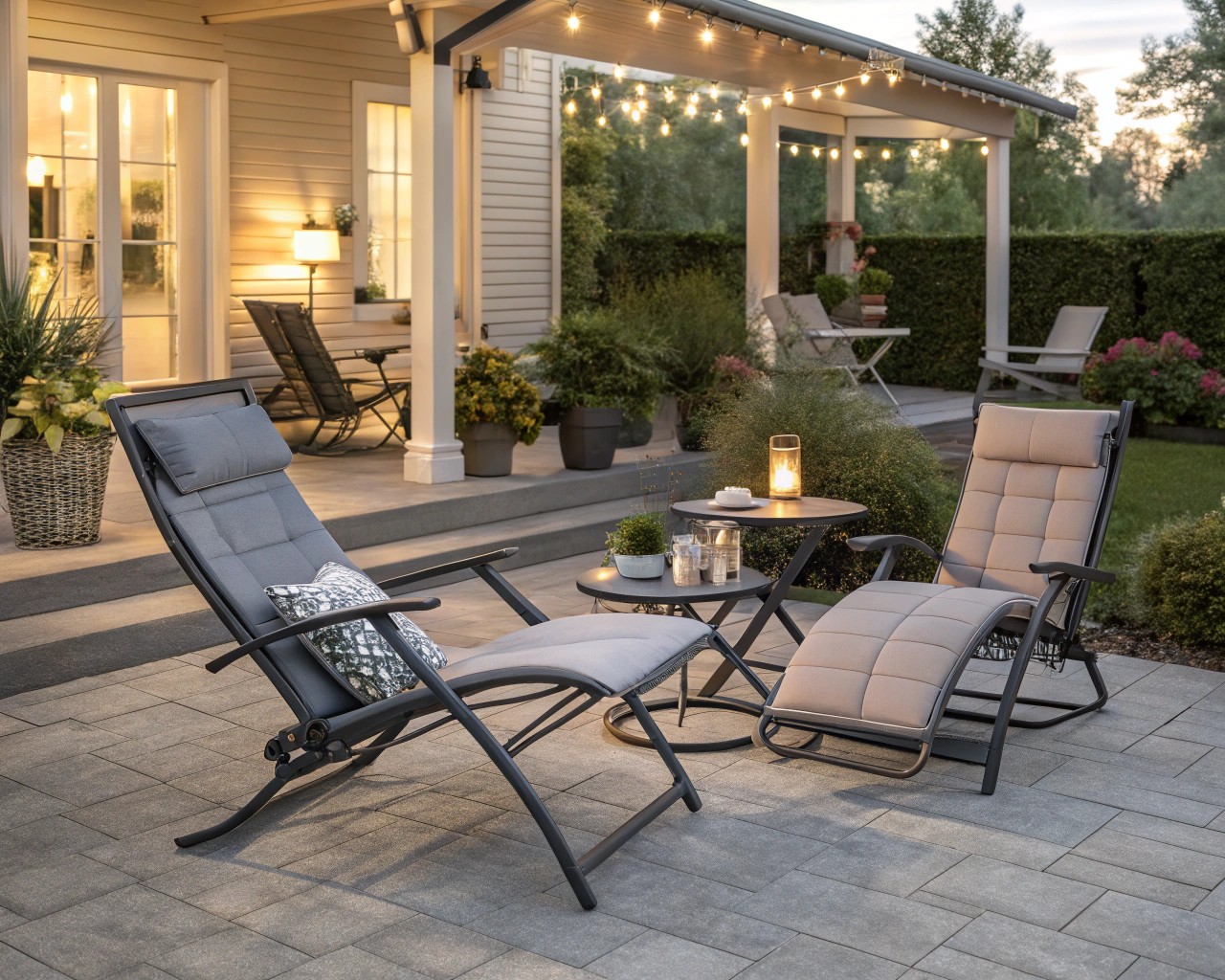
- Weather-resistant materials – Look for powder-coated aluminum, teak, polywood, or marine-grade polymer
- Quick-dry cushions – Essential for spaces exposed to precipitation
- Modular pieces – Allow for flexible arrangements as needs change
- Storage options – Consider pieces that offer hidden storage for seasonal items
- Weight and mobility – Determine if pieces need to be moved seasonally
- Covers and protection – Invest in quality covers for pieces that remain outdoors
For optimal flexibility, we often advise maintaining an open central area to promote easy movement. Selecting lighter-weight furniture is also beneficial, as it allows for quick rearrangement ‘to accommodate different-size crowds on the fly’. This adaptability is key for spaces that need to adjust to different seasons and uses.
Seasonal Decor Transitions
| Season | Color Palette | Textile Changes | Accessory Focus | Planting Emphasis |
|---|---|---|---|---|
| Spring | Fresh greens, pastels | Lightweight fabrics | Fresh flowers, glass elements | Bulbs, early bloomers |
| Summer | Bright, vibrant colors | Performance fabrics, light textures | Outdoor dishware, pillows | Colorful annuals, containers |
| Fall | Warm oranges, reds, yellows | Heavier textures, throws | Lanterns, natural elements | Ornamental grasses, fall foliage |
| Winter | Deep greens, whites, metallics | Wool, faux fur, velvet accessories | Lighting, evergreen elements | Structure, evergreens, berries |
Landscaping for Year-Round Interest
The plantings and hardscaping around your outdoor room play a crucial role in creating year-round appeal. Thoughtful landscape design extends enjoyment beyond the confines of structures.
Four-Season Plant Selection
Creating a garden with year-round interest requires selecting plants that offer different features throughout the seasons:
- Structure providers – Evergreens that maintain form and color throughout the year
- Seasonal bloomers – Plants that flower at different times
- Fall color specialists – Trees and shrubs with dramatic autumn displays
- Winter interest plants – Species with interesting bark, berries, or form
- Ornamental grasses – Provide movement, sound, and winter structure
Experts like Richard Rogers Designs recommend incorporating grasses such as Acorus gramineus ‘Ogon’, noted for its year-round golden hue. Varieties like Miscanthus or Calamagrostis are also suggested, as they retain their distinctive flower heads from mid-summer well into the next spring, providing extended visual interest.
Hardscaping Elements
Permanent hardscape features provide structure when plants are dormant:
- Stone walls – Offer wind protection and visual interest
- Water features – Can be designed to operate year-round
- Sculpture and art – Focal points that don’t depend on season
- Pathways – Ensure accessibility during wet or snowy periods
- Raised planters – Add height variation and definition
In many of my projects, I’ve incorporated raised planters built from materials that echo the home’s architecture. These elements provide structure during winter months while showcasing lush plantings during the growing season—a dual-purpose approach that ensures the garden never feels barren.
Case Studies: Successful Multi-Season Spaces
Examining real projects provides valuable insights into successful multi-season outdoor room design.
Case Study: Slim House Backyard Transformation
The Slim House project demonstrates key principles for creating functional outdoor spaces that work year-round:
- Clear project goals – The primary objective was promoting outdoor use with a pool as centerpiece
- Solar orientation and shading – Strategic placement of structures and trees created a balance of sun and shade
- Indoor-outdoor connection – Spaces were designed with relationship to interior rooms in mind
- Utilizing existing elements – Mature trees were incorporated for shade and atmosphere
The designers framed the pool with a new cabana structure that created a clear spatial “bookend” while housing both indoor and outdoor activities. Under the cabana’s overhang, an integrated seating space offered a balance of sunlight and shade in close proximity to amenities.
Case Study: Susan’s Compact Outdoor Living Space
In a smaller-scale example, homeowner Susan transformed a plain back garden into a bright, easy-to-maintain, functional space with specific objectives:
- Create an attractive outdoor living space
- Block the view of a utilitarian shed
- Conceal utility access
- Create comfortable seating and dining areas
- Create a vibrant view from indoor living spaces
Using limestone paving, decorative aggregate, timber panel fencing, and strategic plantings, she achieved all objectives in a cohesive design that works year-round. This project demonstrates how even modest spaces can be transformed into useful outdoor rooms with thoughtful planning.
Case Study: Northern Climate Sunroom
A more enclosed approach is demonstrated in the Four Seasons Sunroom project, which created a year-round space in the challenging Midwest climate:
This type of project addresses the challenge of short summers often experienced in regions like the Midwest. Instead of limiting outdoor enjoyment to just a few warm months, structures like Four Seasons Sunrooms, patio rooms, or LifeRooms are engineered to extend the usability of these areas significantly, aiming for comfortable access throughout the entire year.
This particular project utilized durable walling systems offering clear views and minimal barriers, effectively maintaining a connection with the landscape while providing complete protection from the elements. It serves as an example of how technology can help overcome extreme climate challenges for outdoor living.
Planning Your Multi-Season Space
As you envision your own year-round outdoor room, consider these essential planning steps:
Assessment Checklist
- Climate analysis – What are your specific seasonal challenges?
- Site evaluation – How does sun, wind, and water move across your property?
- Usage patterns – How do you want to use the space in each season?
- Budget priorities – Which elements will provide the most year-round value?
- Maintenance reality – How much upkeep can you realistically manage?
- Phasing possibilities – Can the project be completed in stages?
Design Principles for Year-Round Success
- Prioritize flexibility – Create spaces that can adapt to changing conditions
- Layer protection – Incorporate multiple options for shelter from elements
- Create microclimates – Design areas that moderate extreme conditions
- Balance aesthetics and function – Develop beautiful spaces that work practically
- Plan for transitions – Consider how spaces flow between indoors and outdoors
- Address all senses – Incorporate sound, scent, and texture to enhance seasonal experience
We’ve found that the most successful multi-season outdoor rooms grow from a deep understanding of how homeowners actually live and what brings them joy in each season. The process should begin with understanding your specific needs rather than following generic trends.

